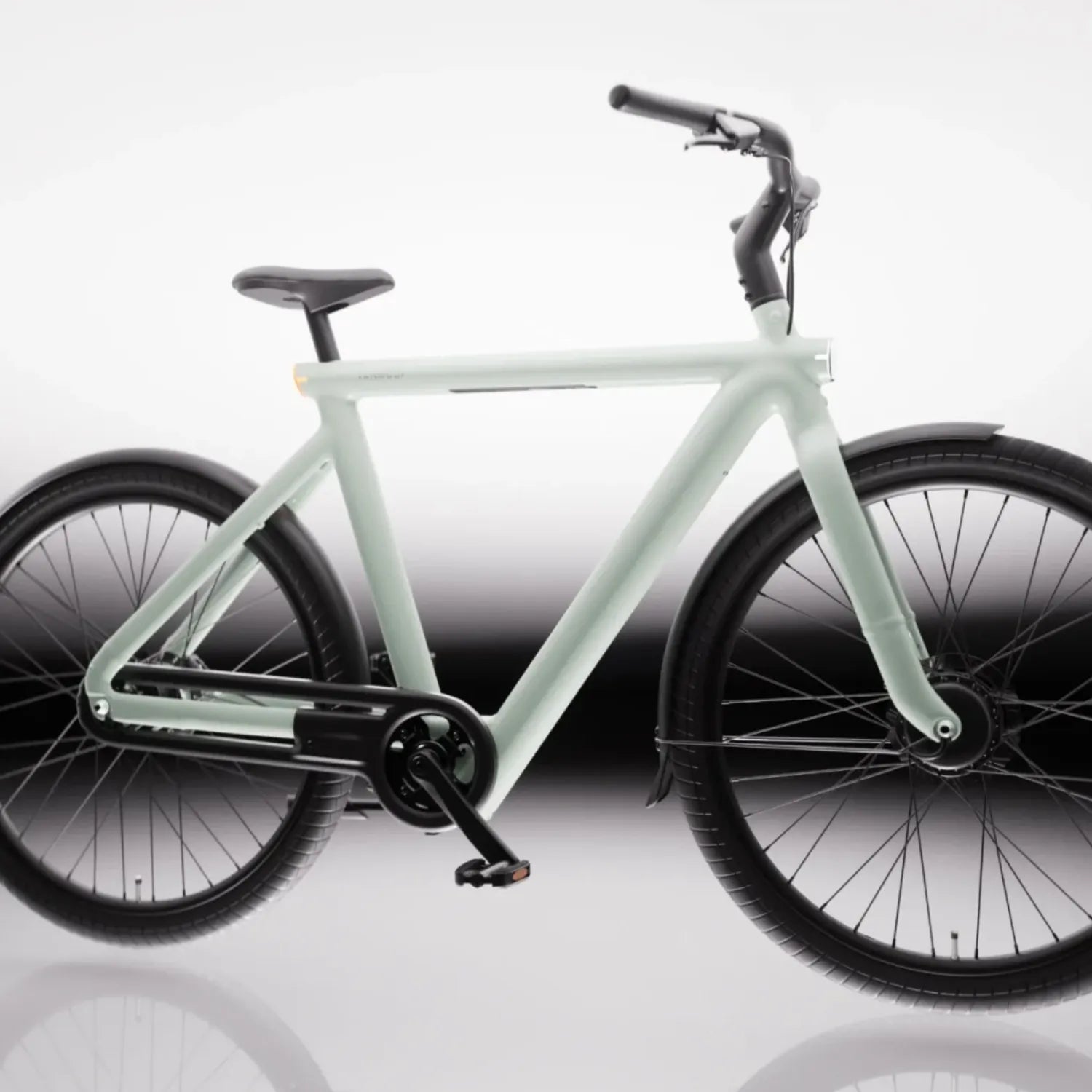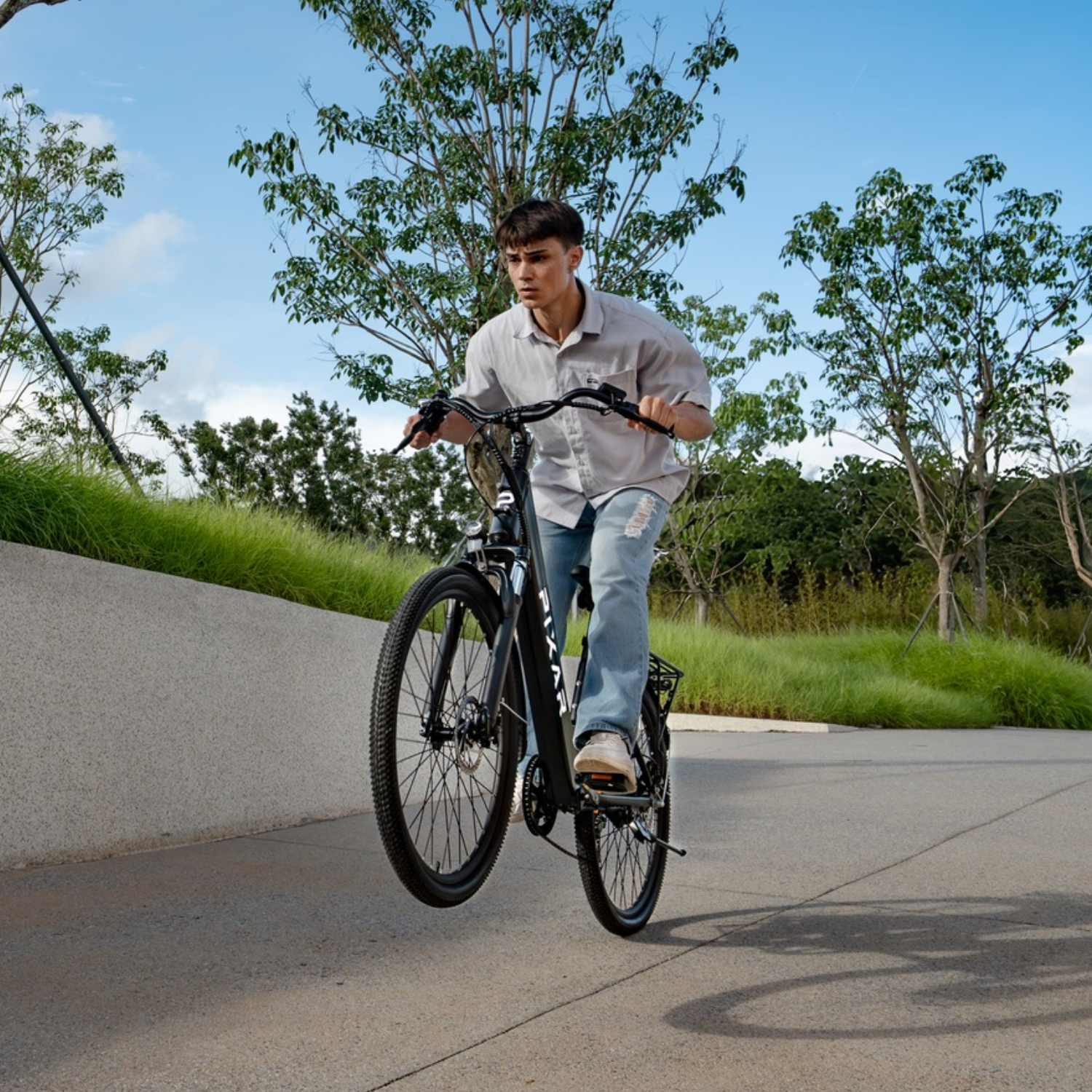With autumn’s shorter days and cooler temperatures, there’s no need to put your e-bike away until spring. Simple maintenance will keep it in peak condition during colder months, so you can comfortably enjoy rides this season.
Here’s a concise guide to safeguarding your e-bike in cold weather.
How Cold Weather Damages Your E-Bike
Low temps + moisture damage performance and longevity in three key ways:
- Battery problems: Cold slows internal chemical processes, reducing efficiency and range—this starts below 50°F (10°C).
- Corrosion risk: Rain, fog, and road salt can rust frames and drivetrains; moisture leaks into electrical components, causing shorts or weak connections.
- Safety hazards: Cold lowers tire pressure, and wet/icy roads cut traction. Dampness also speeds brake wear, weakening stopping power.
Without precautions, cold weather can damage your e-bike and create risks.
Battery Care in Low Temperatures
The battery is your e-bike’s most temperature-sensitive part—follow these tips to protect it:
- Store and charge indoors: Remove detachable batteries and keep them at 50–77°F (10–25°C). Charge in a temperature-controlled space; most batteries stop charging below 32°F (0°C) to avoid damage.
- Control charge levels: Keep daily charge at 30–80% to minimize wear. For long storage, aim for 60–80% and recharge if it drops below 60%. Never fully drain the battery in cold weather.
- Guard connections: Wipe battery contacts dry with a clean cloth after rain. A thin coat of dielectric oil blocks moisture and corrosion.
- Tweak assist modes: Use lower power settings to prevent fast battery drain, saving charge for your return trip.
Everyday Maintenance for Cold, Damp Conditions
Cold damp speeds up wear—adopt these habits:
- Clean wisely: After muddy or snowy rides, wipe with lukewarm water and a soft cloth (never high-pressure washers, which harm electrical parts). Focus on frame gaps, drivetrains, and battery contacts.
- Lubricate correctly: For chain-driven models, apply winter-grade lube after cleaning or every 50–75 miles. Choose wax/silicone wet lubes (resist washout) with extreme-pressure additives (e.g., tungsten disulfide) for e-bike torque. For belts, use manufacturer-recommended silicone sprays.
- Check tires weekly: Cold deflates tires—keep pressure slightly below max for better traction. Remove embedded stones and check for wear; use winter tires if icy.
- Care for brakes: Test brakes before each ride for sponginess. Wipe pads/discs after salted roads to remove corrosion. Check pad thickness monthly; replace hydraulic brake fluid annually (moisture ruins performance).
- Guard electronics: Use waterproof covers for displays in rain. Power off and fully dry all electrical parts after moisture exposure—never store with a damp battery compartment (prevents mold and corrosion).
Tips for Long-Term Storage
If storing your e-bike for over 2 weeks in winter:
- Choose a spot: Use a dry, ventilated area at 50–77°F (10–25°C). Avoid garages with temperature swings or humid basements. If indoor storage isn’t possible, use a waterproof cover and store the battery indoors.
- Prepare the battery: Charge to 60–80%, disconnect it, and store flat in a dry spot (away from heat, never upside down).
- Get the bike ready: Clean and dry the entire e-bike. Apply anti-rust oil to exposed metal parts. Inflate tires to 80% of max pressure (prevents flat spots) and use a stand to take weight off tires.
Ride Safely This Winter
Autumn and winter rides offer crisp air and quiet roads—best enjoyed on a well-maintained e-bike. These tips protect your investment, lower repair costs, and keep rides safe.
Good care isn’t just about preserving your e-bike—it’s about keeping winter adventures alive. Where will your well-maintained e-bike take you this season?















Leave a comment
This site is protected by hCaptcha and the hCaptcha Privacy Policy and Terms of Service apply.